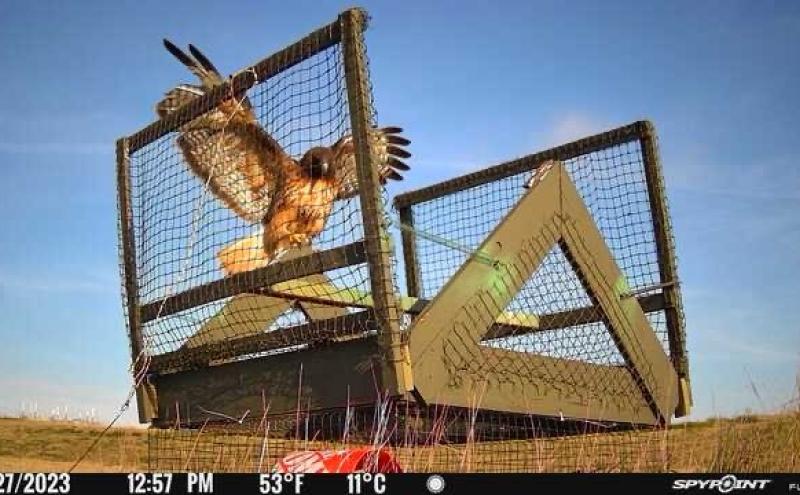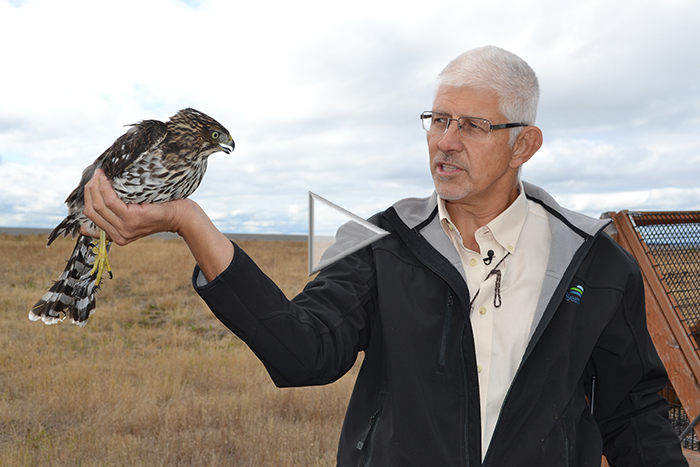
Raptor strike avoidance program
The raptor strike avoidance program is just one of many programs at SEA that helps reduce or eliminate the features that draw wildlife to the airport, protecting both passengers and wildlife.
SEA’s program has been in operation since June 2001, and was one of the first in U.S. airports aiming to reduce the number of birds that pose a risk to aircraft as well as human and avian life. Each year the Port traps and relocates nearly 100 raptors, or birds of prey, contributing to the airport’s wildlife management efforts for safe aircraft operation and safe homes for raptors.

Wildlife Biologist Steve Osmek holds a hawk removed from a trap at SEA.
How are raptors trapped?
SEA operates five Swedish Goshawk traps strategically located around the airfield perimeter. Their design, which dates back several centuries, allows for humane live-capture of many species of raptors including bald eagles. Trained wildlife airport responders are alerted via a satellite transmitter to allow quick removal of the trapped bird.
Safe removal, release, and tracking
Responders remove the captured raptor by hand to avoid harming the bird. Once in hand, raptors are carefully hooded, placed in a kennel, and tagged for tracking and to prepare for release about 70 miles north of the Airport in Skagit County. Birds are then released to suitable forests and agricultural locations.
Between 2001 and 2025, more than 2,000 raptors have been successfully relocated from SEA Airport program.
Learn more about raptor strike avoidance: "Raptor Strike Avoidance at Seattle-Tacoma International Airport: A Biological Approach"

